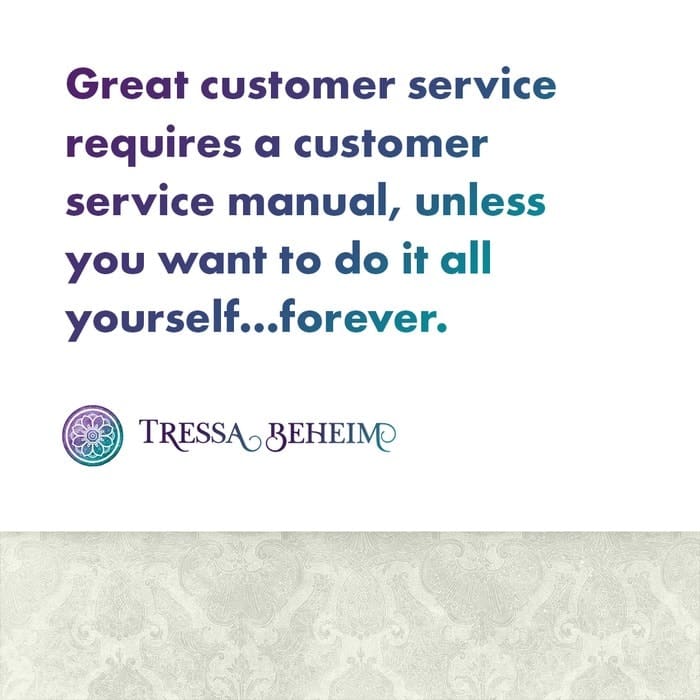Whether you offer services, products, courses, or programs, as your business grows, customer service becomes a larger part of your daily operations.
Eventually, you will need help to provide the service your clients and business deserve. Before you can successfully hand off this duty, though, you’ll need to build a customer service manual to support your team.
Customer service is an integral part of any business’s success (or failure). It can also be a somewhat complicated and daunting beast to manage. This can make the idea of building a customer service manual seem like an overwhelming task, but with some strategy and planning, you can complete one with ease.
Let’s unpack it!
Frequently Asked Questions
I like to start by making a list of the most frequently asked questions you get from potential clients. Solid lead follow-up is an integral part of growing or maintaining revenue so making sure these types of questions can be effectively answered is essential. It’s also part of any successful lead follow-up system.
You want to think about what confuses prospects and what objections you commonly run into and address these in your list.
Similarly, make a list of the most common questions you get while working with someone. A few of these may require custom answers but, very often, there are a lot of them that don’t.
Once you have a solid list of these basic FAQs, start answering them. You don’t need any fancy tools or software here as a simple Google doc will suffice to start building your customer service manual.
Handling Common Requests
Once you’ve got your FAQs handled, you need to create a list of common customer service requests.
Your list can include things like:
- Refund requests
- Discounts
- Scheduling
- Delivery of items
- Client responsibilities
- Timelines
- And more!
Build out how you commonly handle these issues item by item until you’ve covered the basics. The goal is not to cover every possible request but rather to focus on addressing the most likely issues your customer service team will see. This creates a solid foundation for your customer service manual that will allow them to handle the majority of issues without your direct input.
As you’re working on this, you can also include instructions on when you need to be involved. Empower your team by letting them know what they can do on their own and when you need to be informed!
After you’ve created the questions and answers for this stuff, you’ve made huge strides towards a solid draft of your customer service manual.
Next, start to consider the other types of inbox requests you receive somewhat regularly.
Do you have guidelines for things like:
- Speaking requests
- Summit requests
- Guest post requests
- Collaboration requests
- “I want free advice” emails
- Vendor inquiries — unsolicited or otherwise
Again, you don’t have to come up with every possible scenario, but do your best to identify the most common ones you see.
Pro tip: For things like interview requests, consider building a simple form that asks all the information you’ll need to make an informed decision. This prevents a lot of back and forth, plus, it allows your team to evaluate the majority of requests without your input.
After you’ve completed these steps, you’ll have created most of the customer service manual so be sure to celebrate!
Putting Your Manual to Work
Now that your manual draft is done, you can make customer service a true asset to your business. That starts with figuring out how you want your team to actually use the document.
Think through things like:
- How should the responses be sent? For instance, do you want your team to copy/paste directly or edit them?
- Who can edit canned responses in the manual?
- Who can add responses to the manual? Do they need approval from anyone once added?
- Are there any basic guidelines for when to make exceptions?
- Are there any guidelines for when you need to be involved or informed before any action is taken?
Your customer service manual is a dynamic tool for your business, so don’t look at updates as a failure. As your business grows and changes, so too will customer service. Your goal is to create the foundation to start with and update/improve as you go.
Building your customer service manual is an investment in operational success that will certainly pay off in consistent support for your customers — with the added bonus of freeing you up from answering all the questions all the time.



